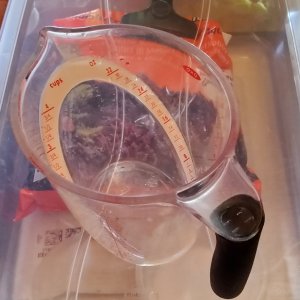Reducing nitrates with water changes, tips and charts

www.reefcleaners.org
Information
I wish we could sell a natural product that could reduce nutrients as quickly as a water change, but biological processes take time. If you have to, or desire to bring your nitrates down quickly, water changes are the way to go. When doing your water changes, here are a few tips to remember:
Prepare the water used for your water change in advance. Ideally, the water used will come from an RO/DI or distilled water source, and mixed with a quality brand of salt. You should aerate the water and let it sit long enough until it matches the temperature and ph in your aquarium. Use a heater if necessary, ice can bring the temperature down if necessary.
Turn off all pumps and skimmers - Often this step will be forgotten until the water level gets too low, and the water change process is interrupted. A water change should not take too long, and the loss of current and filtration during this time should not be an issue.
Remove and clean any filter pads or micron socks that may be holding decaying food, and clean or replace them.
Allow any debris stirred up during this part to settle for a few seconds. Then begin siphoning the tank after the filters are in place again.
When siphoning the tank, you will be able to "vacuum up" more debris if you use a smaller tube rather than a larger one, because you get more time. We like to use 3/8'' diameter or smaller tubing for most tanks, and 1/4 for nanos. While siphoning, placing your finger near the entrance to the tube will help block out debris that can clog it, and serve as a means to stop it temporarily if you cover the hole. Should the tube get clogged anyway. smack it against the ground as if you were trying to whip an imaginary ant. That should dislodge it.
You will get a better result reducing nitrates if you do larger changes, even over a greater period of time than if you do smaller changes. Assuming a 5ppm nitrate accumulation over a course of a week, we get the following 6 month results:
(In this case, the tanks start off with 100ppm nitrates)
WeekTank A Weekly 10% Water Changes Tank 2 Bi Weekly 20% Water Changes1100 100295 85390.5 486.45 78582.81 679.52 72.4776.57 873.91 67.92971.52 1069.37 64.34
The results are much better at 40% weekly water changes, until corrected. From there, a bi-weekly schedule should keep it maintained, if 25% water changes are continued.
WeekTank A Weekly 10% Water Changes1100265344431.4523.84619.3
This chart will Help you determine how much water you should change in gallons each time to reduce your nitrates to 10ppm in 5 weekly water changes.
Aquarium Size in Gallons200ppm100ppm80ppm60ppm40ppm521.51.2510.7510432.521.52086543301297.564.5401612108650201512.5107.56024181512970282117.51410.580322420161290362722.51813.51004030252015110443327.52216.51204836302418130523932.52619.51405642352821150604537.53022.51606448403224170685142.53425.51807254453627190765747.53828.52008060504030
Happy Reefing! Hope this chart and info help.


